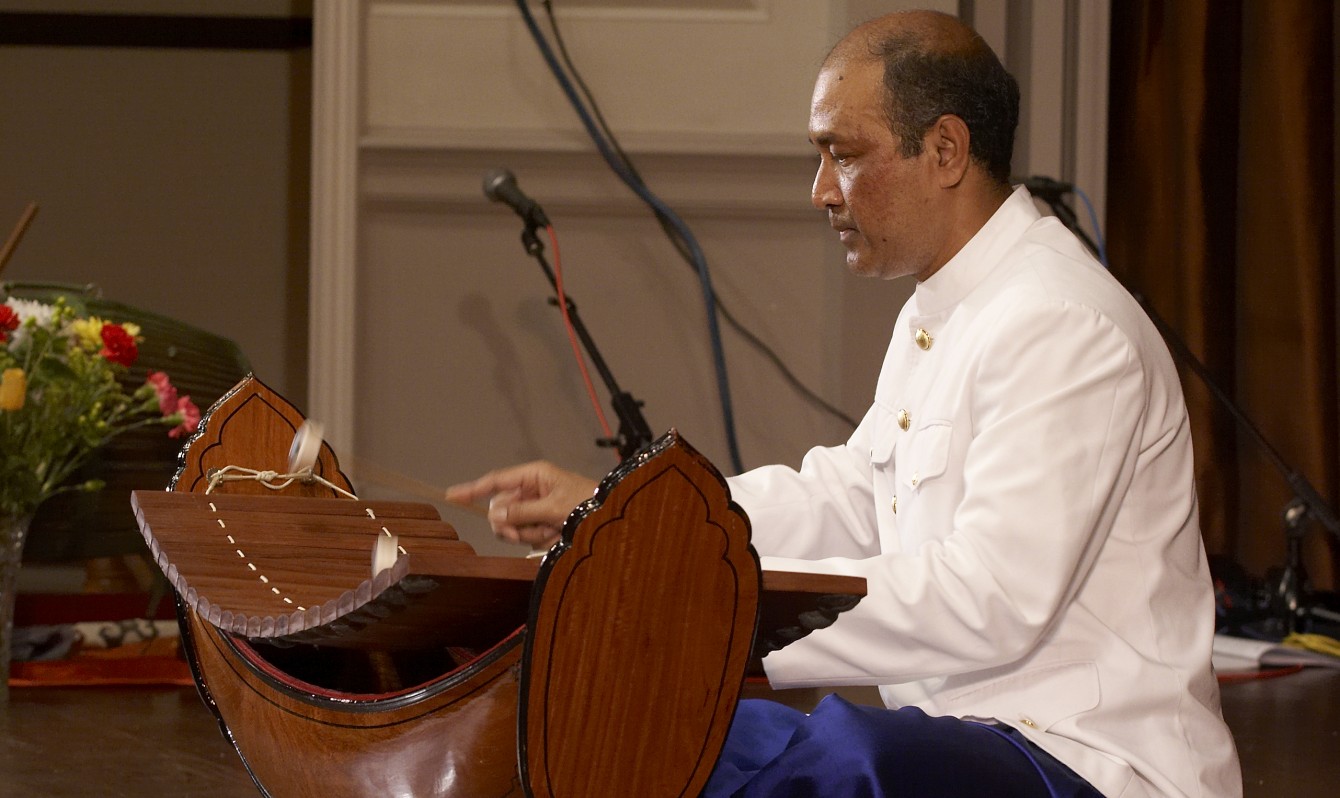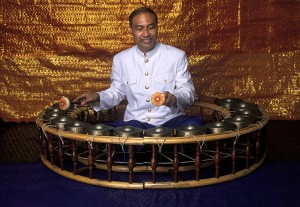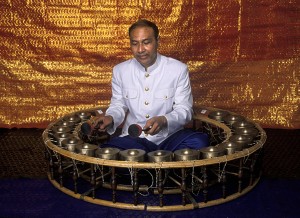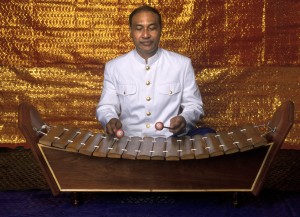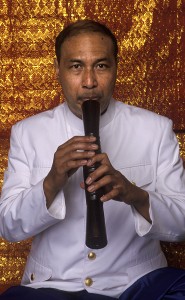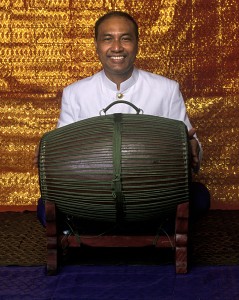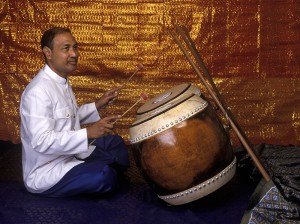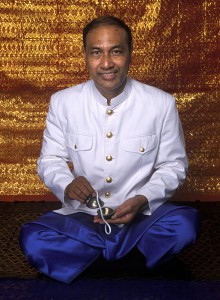Pin Peat Instruments
Roneat aik
A high-pitched, wooden xylophone with twenty-one bars, serving as the ensemble leader.
Chamnan (roneat aik only)
Kong thom
This semi-circle of sixteen low-pitched gongs works in tandem with the roneat aik as an ensemble leader
Chamnan (kong thom only)
Kong toech
This circle of sixteen high-pitched gongs shadows and embellishes the articulations of the roneat aik.
Chamnan (kong toech only)
Roneat thung
This low-pitched xylophone with sixteen bamboo bars adds an acoustic thread to the ensemble that lures listeners away from the easy-to-follow paths of the roneat aik, kong thom, and sralai. Chum employs techniques known as tlok kamblaeng (joking around) which stretch and condense rhythmic patterns, slice and augment melodic phrases, and blend bright with muffled strokes.
Chamnan (roneat thung only)
Sralai
This hardwood quadruple-reed oboe shuttles listeners between the leading voices of the roneat aik and kong thom.
Chamnan (sralai only)
Sampho
This two-headed, barrel drum is considered the Krou (technical and spiritual teacher) of the ensemble and a sacred vehicle for linking human with supernatural worlds.
Chamnan (sampho only)
Skor thom
This set of two, large, double-headed barrel drums responds (chhlary) to the call (hao) of the sampho.
Chamnan (skor thom only)
Chhing
This set of bronze hand-cymbals provides a steady pulse for the ensemble, preventing musicians from getting lost amidst diverse renditions of a tune.
Chamnan (chhing only)
